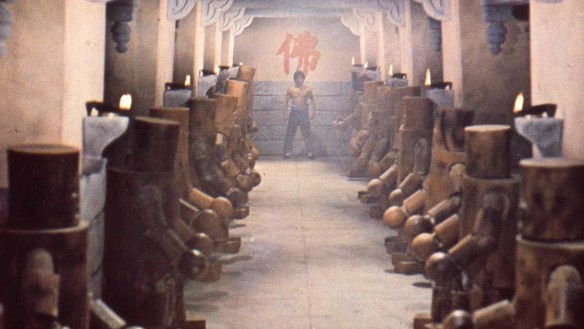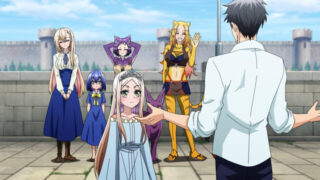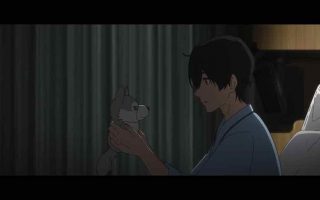Hello folks, and welcome back to Wrong Every Time. This week saw me finishing up Persona 3 Reload, after first attempting and failing to finish the original game back in 2008 or so. I had a fine enough time with it on the whole, though in retrospect, it probably wasn’t a great idea to play this directly after Metaphor: Refantazio. Metaphor demonstrates Atlus’ powers at their current peak, polishing and innovating on Persona’s framework in both a mechanical and narrative sense; in contrast, 3 feels dated compared to its successors, its core loop less embellished with variations, its narrative wandering and poorly structured. Nonetheless, there’s a core appeal to Persona’s make friends->build Pokemon->make more friends->build stronger Pokemon loop that remains one of the most addictive compulsions in game design, and I did appreciate 3’s clarity of thematic focus, even if it was kinda lacking in the human element that made 4 and 5 so special. Also, movies! We ran down a pile of movies this week, so let’s get to those!
First up this week was Shaolin Wooden Men, an early Jackie Chan feature from 1976. Jackie stars as a mute Shaolin student who is haunted by the memories of his father’s killer, and bullied by his fellow students for his difficulties in managing their training. Eventually, Jackie finds an unexpected teacher locked in a mountain cave, and learns from him the secrets of a deadly style. However, when Jackie’s teacher escapes, the student will have to use his newfound powers to defeat the master, and at last avenge his father’s name.
A Jackie feature where he’s forbidden from saying anything certainly makes for an interesting experiment. On the one hand, the man is an endless fountain of charisma, and casting him as a mute is clearly not the sort of thing they’d gamble on these days. On the other, he’s such a master of physical comedy and facial contortions that limiting him in this way isn’t much of a handicap; silent or not, he’s still got a Chaplinesque fluency in expressing himself purely through movement.
That choice aside, Shaolin Wooden Men is an absolute, absurd buffet of martial arts goodness. The film opens with a ten minute sequence pitting Jackie against five Shaolin masters, and rarely slows from there; the titular wooden men earn a great setpiece around the halfway point, and Jackie engages in perhaps half a dozen extended duels throughout the rest of the drama. Early Jackie films are astonishing tableaus of incidental riches; the man was far bigger than his roles at the time, and he attacks each of them with charisma and astonishing physicality. An exceedingly generous watch.
Continuing our investigation of the big shonens’ tie-in films, we then checked out the first two Dragon Ball Z films, The Dead Zone and The World’s Strongest. Each of these offer pretty much what you’d expect from a Dragon Ball Z film: perhaps fifteen to twenty minutes of establishing some new threat, twenty-five minutes of Goku and company beating the crap out of it, and just enough time to spare for some goofy Gohan-centric musical number. There is unfortunately little that separates these tonally or structurally from the show proper, though it is certainly nice to see early Z-era designs animated with such fluidity. As far as that goes, the absolute highlight of these two films was Hisashi Eguchi’s marvelous addition to The Dead Zone’s finale. Contextualizing a clip like that was well worth the viewing!
We then checked out Son of the White Mare, an animated fantasy cataloging the journey of Treeshaker, a heroic figure of Hungarian folklore. Directed by Marcell Jankovics, the film follows Treeshaker’s journey from his birth as the third son of the white mare to his reunion with his brothers, and onward to his brave journey into the underworld. Eventually, Treeshaker must do battle with three terrible dragons in order to save three princesses, and at last reclaim his rightful position as king.
Son of the White Mare is an absurd marvel of visual storytelling, comparable only to similar feats of ecstatic animation like Fantasia or Mind Game. I have never before seen animation so effectively used to convey the fundamental ambiguity of gods and demons; even as Treeshaker converses with some being, its shape is likely to warp and wane incessantly, here evoking a man’s beard in the brush, there capturing his eye as the moon in the night sky. Through this glorious, gorgeous fluidity of movement and form, Son of the White Mare somehow captures the essence of gods as they are addressed in narrative or myth, as both individuals and aspects of reality in simultaneous, ever-shifting array.
Basically every moment of Son of the White Mare offers a new visual revelation, constantly shifting in design and perspective, yet maintaining a clarity of storytelling that would seem impossible given such ever-present distortion. The character “designs” are essentially a series of visual motifs that can assume diverse forms while maintaining their fundamental essence, drawing on ancient styles and newer innovations alike, contrasting cave-scrawled visions of the sun against brutalist “dragons” and art deco-tinged captive princesses. The story is action-packed and endearing, the clashes of brutish dragons and self-absorbed princesses is charming, and the narrative is conveyed through one of the greatest realizations of design-as-storytelling to ever be achieved in animation. A staggering achievement on all counts.
Last up for the week was Battle Beyond the Stars, another Corman Classic from the early ‘80s. However, unlike Corman’s stretch of ‘80s sword and sorcery films, Battle Beyond the Stars counts as one of his “big swings” – he hired actual movie stars, there’s an original score, and every attempt is made to ensure this film has an appeal beyond accidentally being mistaken for Star Wars. This is Corman’s Fall of the House of Usher for the blockbuster generation, with all the crowd-pleasing spectacle and canny gestures towards unrealized scale that implies.
The film’s plot is simply “what if Seven Samurai rear-ended A New Hope.” A village (planet) of humble farmers is besieged by the evil Sador, played by a delightfully scenery-chewing John Saxon, who vows to return and claim their planet in seven days. The young boy Shad (Richard Thomas) thus heads off to recruit defenders for the planet, eventually assembling a motley collection of raiders, joyriders, crustpunks, meatballs, and maladroits.
I imagine watching Battle Beyond the Stars would feel very different coming directly from A New Hope, where the expected response is likely “wow, what a shoddy imitation.” In contrast, I’m rising up to Battle Beyond the Stars from a previous Corman high of like, Wizards of the Lost Kingdom, meaning everything about this film felt grand by comparison. The sets actually look pretty convincing, there’s a sense of scale, some genuinely great actors (Robert Vaughn’s repentant assassin feels like a refugee from an actual classic), and the script is at least poaching its ideas from worthy targets. The film unfortunately feels a touch shapeless; there’s no real sense of progression or clear stakes in the second half, which is basically anathema to a Seven Samurai-like, where having a clear impression of the battle’s flow is essential. Nonetheless, there are enough charming individual components here to forgive the film for not quite measuring to the sum of its parts; Corman knows how to stretch money thin, and Battle Beyond the Stars represents the most he ever stretched.




